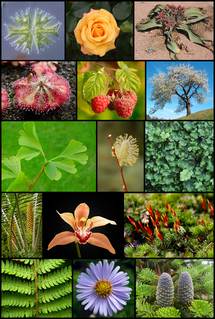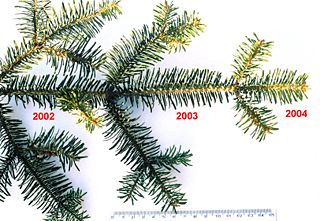| Siparuna | |
|---|---|
 | |
| Siparuna guianensis | |
| Scientific classification | |
| Kingdom: | Plantae |
| Clade: | Angiosperms |
| Clade: | Magnoliids |
| Order: | Laurales |
| Family: | Siparunaceae |
| Genus: | Siparuna Aublet 1775 |
| Species | |
see text | |
Siparuna is a genus of plants belonging to the family Siparunaceae. These aromatic evergreen trees and shrubs are found throughout the Neotropic ecozone. Over 70 species have been described.

Plants are mainly multicellular, predominantly photosynthetic eukaryotes of the kingdom Plantae. Historically, plants were treated as one of two kingdoms including all living things that were not animals, and all algae and fungi were treated as plants. However, all current definitions of Plantae exclude the fungi and some algae, as well as the prokaryotes. By one definition, plants form the clade Viridiplantae, a group that includes the flowering plants, conifers and other gymnosperms, ferns and their allies, hornworts, liverworts, mosses and the green algae, but excludes the red and brown algae.

Siparunaceae is a family of flowering plants in the magnoliid order Laurales. It consists of two genera of woody plants, with essential oils: Glossocalyx in West Africa and Siparuna in the neotropics. Glossocalyx is monospecific and Siparuna has about 74 known species.

In botany, an evergreen is a plant that has leaves throughout the year that are always green. This is true even if the plant retains its foliage only in warm climates, and contrasts with deciduous plants, which completely lose their foliage during the winter or dry season. There are many different kinds of evergreen plants, both trees and shrubs. Evergreens include:



